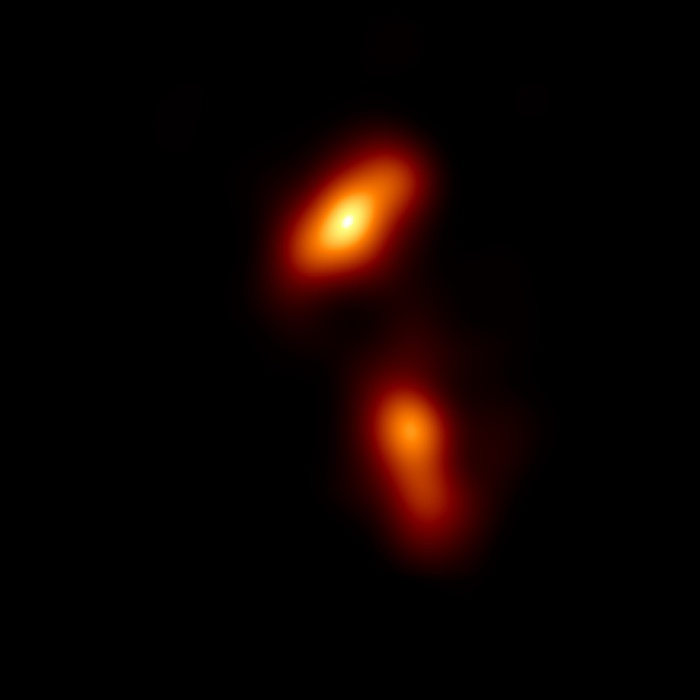Photographed one of the most powerful cosmic phenomena: a jet of plasma emitted from the black hole in the center of a galaxy. The image, published on Astronomy and Astrophysics, is from the collaboration Event Horizon Telescope (Eht), the first to have immortalized a black hole. Italy collaborates with the National Institute of Nuclear Physics (INFN), the National Institute of Astrophysics (INAF) and the Federico II University of Naples. It is a new piece in the puzzle of the history of the universe.
The researchers of the Eht collaboration, funded by the European Research Council (ERC) of the European Commission, photographed a relativistic jet, that is a jet of plasma emitted by a galaxy classified as a quasar, an almost stellar source. Indicated with the abbreviation 3C 279, the quasar is found in the constellation of Virgo and its center becomes exceptionally bright when huge quantities of gas and stars are swallowed in the black hole that occupies it, with a mass a billion times that of the Sun. A part of the gas is then expelled in two jets of plasma almost at the speed of light.
"Every time we open a new observation window on our universe, this gives us new emotions", comments Mariafelicia De Laurentis, researcher at INFN, professor of the Federico II University of Naples and member of the Eht Collaboration. The result, he added, "now allows us to have a greater understanding of nature and the physical processes behind these enormous sources of energy: we have managed to add another piece to the great puzzle of the history of the universe".
Understanding in detail the physical processes related to the formation of relativistic jets has for 50 years "been one of the main lines of research in modern astrophysics", notes Ciriaco Goddi, scientific manager of the BlackHoleCam project, Eht's main European partner. "Thanks to the Eht project - he adds - we can finally have access to the base of these gigantic jets, which spread for thousands and sometimes millions of light years, and understand their physical relationship from the central black hole".
The telescopes that contributed to this result are Alma and Apex, of the European Southern Observatory (Eso), Iram, James Clerk Maxwell Telescope, the Large Millimeter Telescope, the Submillimeter Array, the Submillimeter Telescope and the South Pole Telescope: they work on the unison thanks to the technique called very long basic interferometry (VlbI), which synchronizes them by exploiting the Earth's rotation making them work as if they were a huge telescope the size of the Earth. Now it will be necessary to wait a while before having new results because the March-April observing campaign was canceled due to the Covid-19 pandemic; however, work continues with the planning of future observations and the analysis of the data collected so far.
Photographed one of the most powerful phenomena in the cosmos VIDEO
2020-04-07T15:28:16.145Z

From researchers who photographed the black hole, a new piece in the puzzle of the history of the universe (ANSA)
